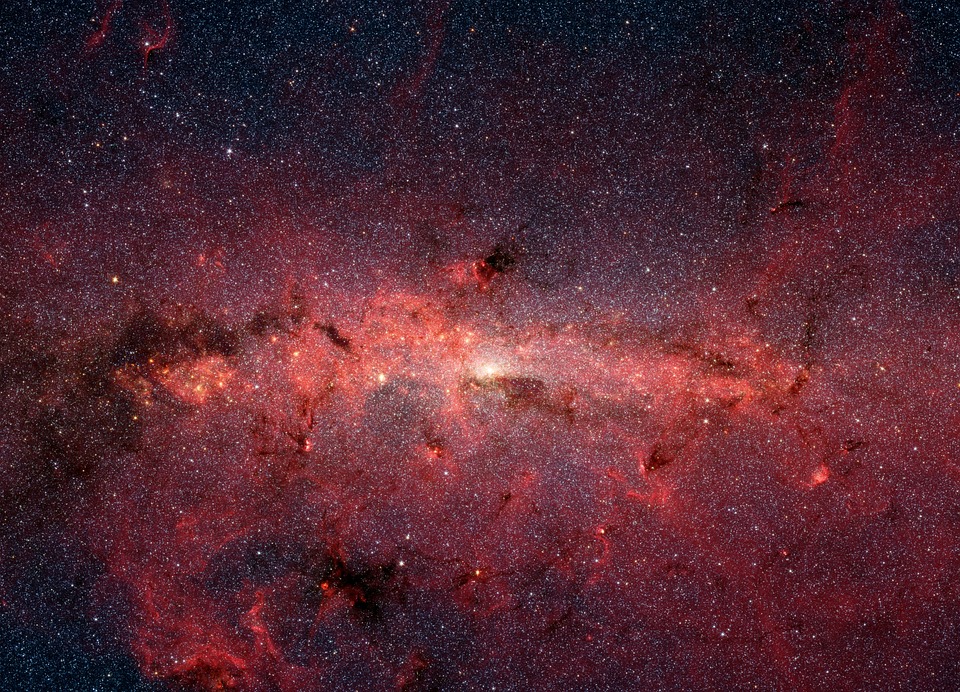There is still so much to learn and discover about space and what lies beyond Earth, which would make it almost like the stuff of science fiction. Another discovery was made when NASA’s TESS satellite spotted an unusual type of star.
Express reports that the TESS satellite detected an unusual kind of star that was shaped like a teardrop, and seemed to be pulsating on one side. The side where it pulsates results in the gravitational forces pulling the celestial object into its teardrop shape. According to the University of Central Lancashire professor Don Kurtz, a star like that should have existed since the 1980s. Kurtz explained that they have been looking for a star like this for a long time.
This star is now formally referred to as HD74423; it has a mass of 1.7 times more than the Sun and is found 1,500 light-years away, closer to the outer edges of the Milky Way galaxy.
According to Simon Murphy of the Sydney Institute of Astronomy, it was “a chemically-peculiar star,” and that is what caught his attention when he saw it. Although stars of this type are very abundant in metals, this particular star is not, making it a rare form of a star.
As to why this star only pulsates on one side, it is because of its red dwarf companion, making it a binary star system. Scientists predict this is only the beginning of many discoveries of similar-looking stars in the future. According to MIT Professor Saul Rappaport, they expect to find more information from the TESS satellite.
Meanwhile, aside from the unique looking star, researchers at the European Southern Observatory spotted an exoplanet with very unusual conditions and very extreme temperatures. The researchers made use of the Very Large Telescope, where they detected the exoplanet that is now known as WASP-76b located 640 light-years away from Earth, in the Pisces constellation.
The day side of this exoplanet is believed to have temperatures as high as 2400 degrees Celsius, hot enough to melt metals, and the winds carry iron vapors over to the planet’s night side, where condensation occurs and turns them into iron droplets. According to the University of Geneva professor David Ehrenreich, “One could say that this planet gets rainy in the evening, except it rains iron.”



 SpaceX Starship Explodes in Texas During Test, Citing Nitrogen Tank Failure
SpaceX Starship Explodes in Texas During Test, Citing Nitrogen Tank Failure  Is space worth the cost? Accounting experts say its value can’t be found in spreadsheets
Is space worth the cost? Accounting experts say its value can’t be found in spreadsheets  NASA Resumes Cygnus XL Cargo Docking with Space Station After Software Fix
NASA Resumes Cygnus XL Cargo Docking with Space Station After Software Fix  SpaceX’s Starship Completes 11th Test Flight, Paving Way for Moon and Mars Missions
SpaceX’s Starship Completes 11th Test Flight, Paving Way for Moon and Mars Missions  CDC Vaccine Review Sparks Controversy Over Thimerosal Study Citation
CDC Vaccine Review Sparks Controversy Over Thimerosal Study Citation  FDA Lifts REMS Requirement for CAR-T Cell Cancer Therapies
FDA Lifts REMS Requirement for CAR-T Cell Cancer Therapies  Lab-grown meat: you may find it icky, but it could drive forward medical research
Lab-grown meat: you may find it icky, but it could drive forward medical research  Trump Signs Executive Order to Boost AI Research in Childhood Cancer
Trump Signs Executive Order to Boost AI Research in Childhood Cancer  Neuren Pharmaceuticals Surges on U.S. Patent Win for Rare Disorder Drug
Neuren Pharmaceuticals Surges on U.S. Patent Win for Rare Disorder Drug  Astronomers have discovered another puzzling interstellar object − this third one is big, bright and fast
Astronomers have discovered another puzzling interstellar object − this third one is big, bright and fast  Trump and Merck KGaA Partner to Slash IVF Drug Costs and Expand Fertility Coverage
Trump and Merck KGaA Partner to Slash IVF Drug Costs and Expand Fertility Coverage  Eli Lilly’s Inluriyo Gains FDA Approval for Advanced Breast Cancer Treatment
Eli Lilly’s Inluriyo Gains FDA Approval for Advanced Breast Cancer Treatment  Lost in space: MethaneSat failed just as NZ was to take over mission control – here’s what we need to know now
Lost in space: MethaneSat failed just as NZ was to take over mission control – here’s what we need to know now 































